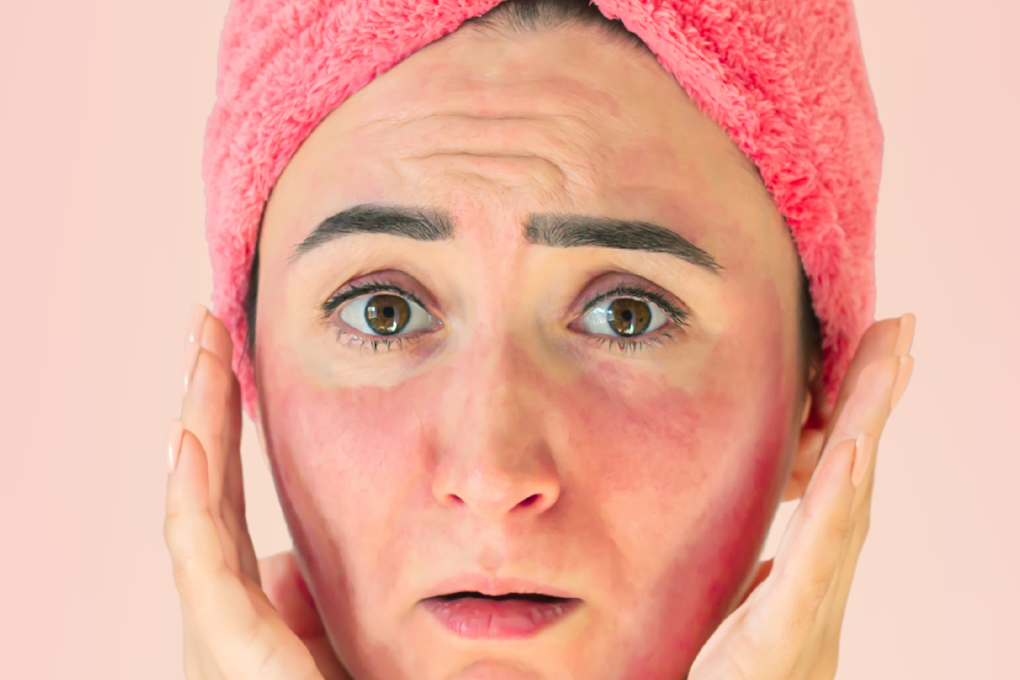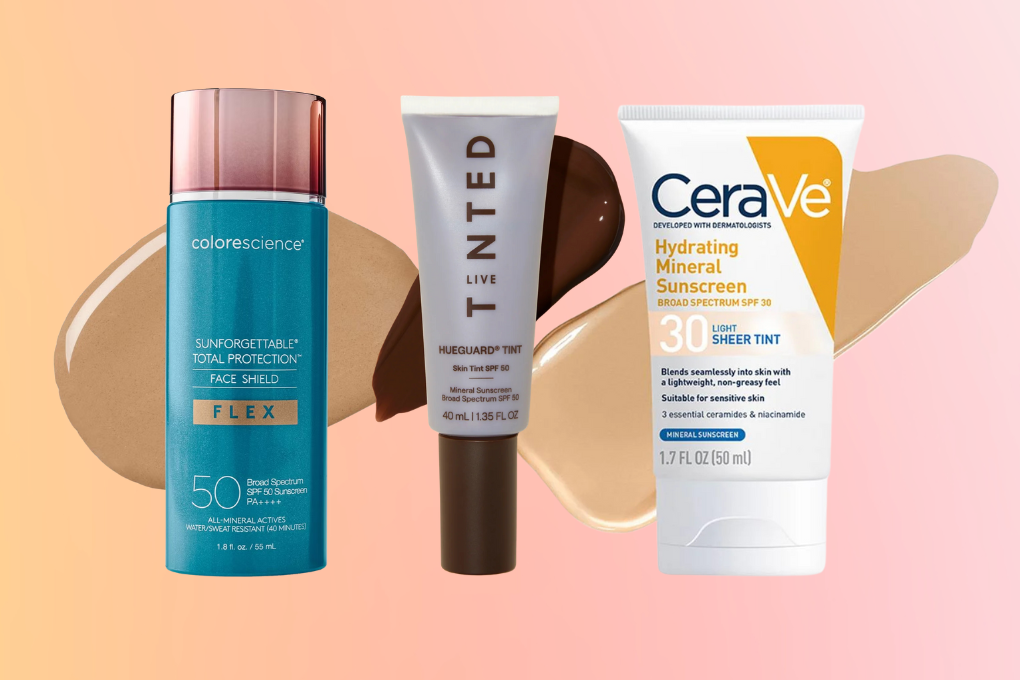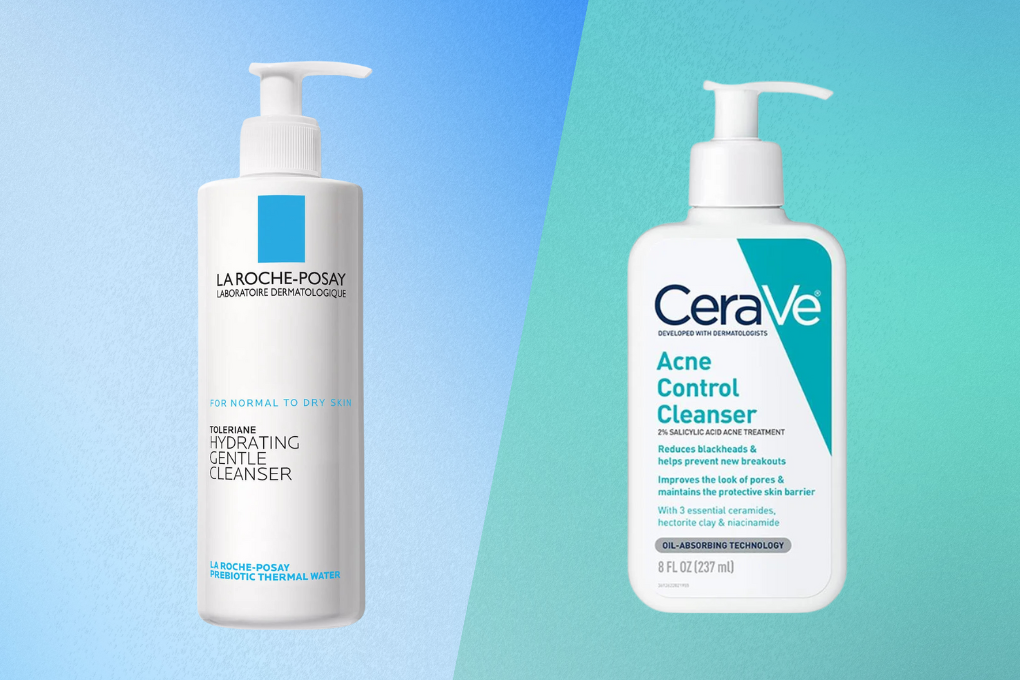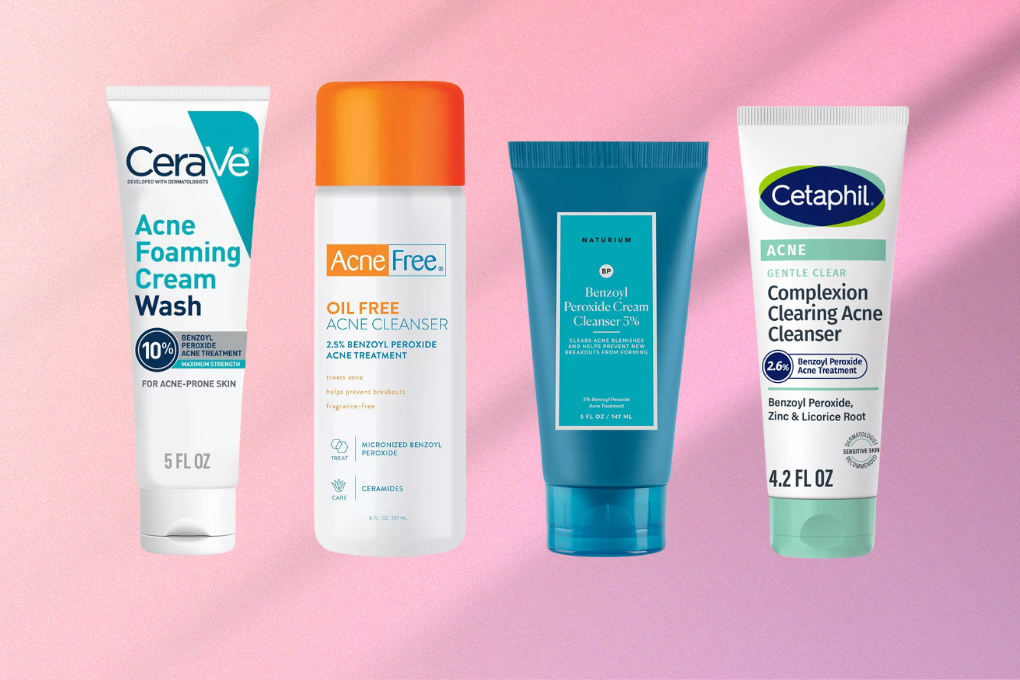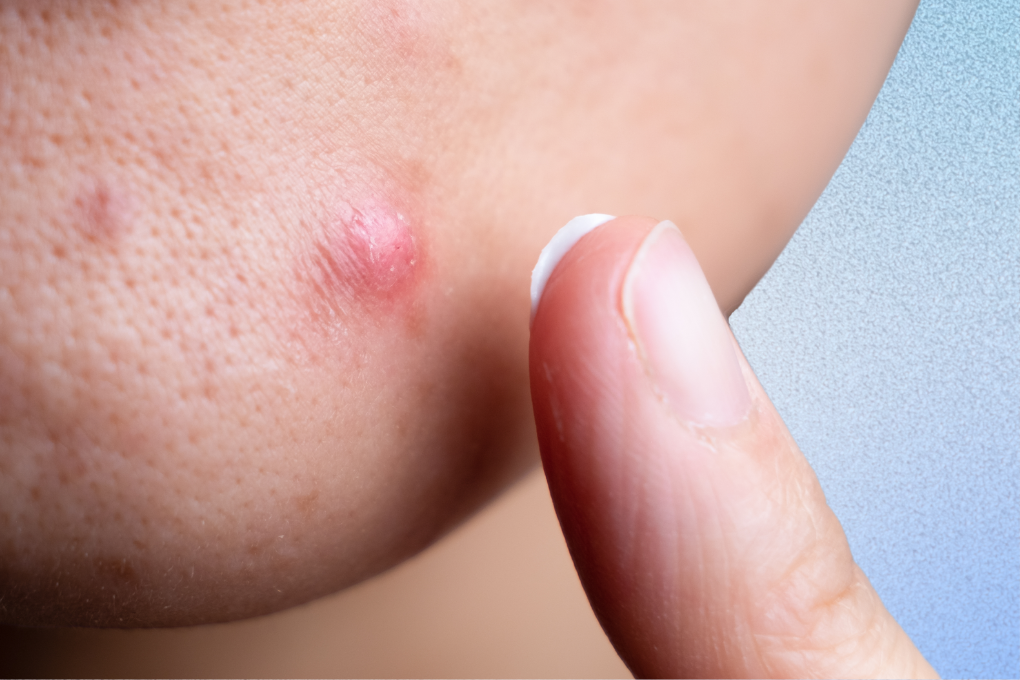Did you know that you can grab a pack of birth control pills off the shelf on your next drugstore run, or even buy it online and have it delivered?
For the first time since oral contraceptives were introduced in the 1960s, there is now a birth control pill that is available without a healthcare provider’s prescription. It’s called Opill, and it is the only over-the-counter (OTC) birth control pill to have been approved by the U.S. FDA.
This is a groundbreaking step for reproductive health, offering more autonomy and access to contraception, but what about our skin? You’re not alone if you are wondering will Opill cause acne?
What is Opill?
Opill is the first FDA-approved over-the-counter daily birth control pill. It is taken in a cycle of 21 active pills followed by 7 placebo pills that trigger your period. It belongs to a category known as mini-pills or progestin-only pills (POPs), which, as the name suggests, contain just one hormone, progestin, which is a synthetic version of the progesterone in our bodies.
Initially, contraceptives were all combination pills, containing both estrogen and progestin. Progestin-only pills were developed later, providing an alternative for those who experienced side effects from estrogen or had health conditions making estrogen use risky. POPs like Opill are still prescribed to people who can’t tolerate estrogen for a variety of reasons.
Norgestrel, the progestin used in Opill, was first approved for use by prescription in 1973. After almost a decade of research, its application to switch from prescription to over-the-counter was approved in 2023, and it was made available in stores in March 2024. Most importantly, it is as effective as prescription birth control pills when taken correctly. So, although adding birth control pills to your Amazon order or picking them up next to condoms and emergency contraception on a store shelf is a brand new experience, the medication in Opill has been used for over 50 years!
Opill Daily Oral Contraceptive Birth Control Pill No Prescription Needed
As of writing, Opill is sold for $20 for a one-month supply, $50 for three months, and $90 for six months. If you have an FSA or HSA account, Opill is an eligible expense for your pre-tax money. If you have health insurance, a prescription for birth control might be cheaper, and in many states, a pharmacist can prescribe birth control to you directly.
How Does Opill Work?
Progestin-only birth control pills, like Opill, work mainly by thickening the cervical mucus, which makes it harder for sperm to enter the uterus and, in some cases, they can even prevent ovulation (the release of an egg). This dual action significantly reduces the likelihood of pregnancy.
Like other contraceptives, its effectiveness depends on consistent and correct usage. With perfect use, it is 98% effective, and with typical use, it is 91% effective. These pills are taken daily, without a break, and it’s important they’re taken at the same time every day because progestin only stays elevated for 24 hours after taking a pill. For maximum effectiveness, set an alert on your phone for the time of day you decide to take it, and make sure to bring your pill along if you will be out of your house at that time.
Does Opill Cause Acne?
Acne is a possible side effect of progestin-only birth control pills like Opill for some people. Why does this happen? Well, for many of us, our acne is hormonal. The progestin hormone that prevents pregnancy can also increase your skin’s oil production. And where there’s more oil, there’s a higher chance of breakouts.
The excess oil can mix with dead skin, clogging your pores. Blocked pores create a perfect home for acne-causing bacteria to grow, leading to inflammation and swelling in the area. This process results in the acne we see, like blackheads, whiteheads, pimples, and sometimes more severe forms like cysts. However, the impact of progestin-only pills on acne is highly individualized, so the effect it has on your skin might be very different from how it affects someone else.
How to Treat Acne on Opill?
If your acne is becoming severe or difficult to control on Opill, be sure to speak to your doctor about switching to another birth control method or starting a prescription acne treatment. Hormonal acne can often become inflamed and even cystic, which might lead to scarring that can be difficult to treat, so it’s important to see a dermatologist early if it feels like it is getting out of control.
In addition to prescription acne treatments like retinoids, antibiotics, and Accutane, combination birth control pills that contain estrogen or spironolactone, which blocks androgens, are often prescribed to treat hormonal acne.
If your acne is not severe and you would like to continue to take Opill, there are several over-the-counter treatment options to help manage your breakouts:
Benzoyl Peroxide
If you are getting inflammatory acne (red and inflamed) on Opill, products with benzoyl peroxide are a good place to start to calm down this kind of breakout. Benzoyl peroxide adds oxygen into your pores, where acne-causing bacteria thrive in the oily environment. These bacteria cannot survive in an oxygen-rich environment, and benzoyl peroxide can kill them off and decrease inflammation.
Start with a lower percentage benzoyl peroxide face wash to avoid overly drying your skin or damaging your skin barrier, and then work up to a higher strength face wash or leave-on product if you don’t see improvement after a few weeks. Benzoyl peroxide can bleach fabrics, so remember to rinse thoroughly and use white towels or a paper towel to dry your face after washing with a benzoyl peroxide product.
La Roche-Posay Effaclar Duo Dual Action Acne Cleanser with 4% Benzoyl Peroxide, LHA, and Niacinamide
Effaclar Duo Acne Cleanser is part of La Roche-Posay's acne-focused Effaclar line. It gets its name from its dual-action approach of treating breakouts and clearing pores to prevent new acne from forming. This face wash thoroughly cleanses the skin to remove excess oil while targeting acne-causing bacteria with 4% benzoyl peroxide and exfoliating with 0.1% lipo-hydroxy acid, a derivative of salicylic acid. It is also infused with La Roche-Posay's soothing prebiotic thermal water.
- Balanced strength
- Lipo-hydroxy acid to exfoliate
- Niacinamide and thermal water to soothe
- More expensive than other options
- Niacinamide can be irritating for some skin types
Paula's Choice CLEAR Regular Strength Daily Skin Clearing Treatment with 2.5% Benzoyl Peroxide
Paula's Choice Daily Skin Regular Strength Clearing Treatment comes in a balanced 2.5% benzoyl peroxide in a leave-on treatment. With soothing allantoin and bisabolol, it will work to calm existing pimples while fighting acne-causing bacteria to prevent future breakouts. For more stubborn acne that does not respond to the regular strength, you can try the extra-strength version with 5% benzoyl peroxide.
- Lightweight lotion with matte finish
- 2.5% benzoyl peroxide is gentle yet effective
- Allantoin and bisabolol to soothe
- May not be strong enough for stubborn acne
Salicylic Acid
If Opill has increased the sebum on your skin, leading to clogged pores like blackheads and whiteheads, salicylic acid can help cut through the excess oil and clear out your pores. Salicylic acid is a type of beta-hydroxy acid (BHA) that works by helping to exfoliate the skin and remove dead skin cells that can mix with sebum and cause acne. What makes salicylic acid especially effective is its ability to penetrate oily pores and dissolve the debris that leads to pimples.
Salicylic acid can be drying, so start with a face wash that contains salicylic acid so you can use it consistently, but it will only be on your skin for a short time. If that is not enough and your skin can handle it, you can move up to a leave-on treatment, usually in a liquid or toner form, with 1-2% salicylic acid.
Clinique Acne Solutions Daily Foam Cleanser With 1.5% Salicylic Acid
Clinique's Acne Solutions Cleansing Foam is a self-foaming cleanser that gently removes dirt and excess oil from your skin. In addition to 1.5% salicylic acid, it also contains acetyl glucosamine to help clear dead skin cells that can block pores, and Laminaria saccharina extract, which can prevent the buildup of oil. As an added benefit, caffeine and sea whip extract reduce inflammation and redness.
- Self foaming pump
- Balanced 1.5% salicylic acid
- Can reduce inflammation and redness
- Expensive
Avène Cleanance ACNE Clearing Gel Cleanser for Sensitive Skin with 2% Salicylic Acid
The Cleanance Acne Clearing Gel from Avene is formulated for skin that is oily, acne-prone, and sensitive. With full-strength 2% salicylic acid, it can clear excess oil and prevent acne. It also contains the probiotic Lactobacillus ferment lysas and Avene thermal water to balance the microbiome, which is important for supporting the skin barrier of sensitive skin.
- Full strength 2% salicylic acid
- Probiotic and thermal water to balance microbiome
- May be strong for some skin types
Paulas Choice Skin Perfecting BHA Liquid Exfoliant with 2% Salicylic Acid
Paula's Choice 2% BHA Liquid Exfoliant is a fan favorite for good reason. This lightweight toner refreshes skin and uses 2% strength of salicylic acid to exfoliate and clear pores. It has an optimal pH, which is important for exfoliants to get maximum effectiveness without irritation, and it contains soothing green tea to support the skin’s barrier. But watch out because this gentle formula is still strong, so remember to ease into use.
- Optimal pH for acid
- Green tea to soothe and support skin barrier
- Expensive
- Too strong for some skin types
Retinoids
Derived from vitamin A, topical retinoids push your skin to shed dead cells, which helps prevent pores from becoming clogged. Their powerful action doesn’t stop there; they also reduce inflammation, a key culprit behind red, painful pimples.
Using retinoids can lead to clearer, smoother skin over time, but they require patience and consistent use as they slowly work their magic. They are known for causing irritation and purging at the beginning, also known as the retinoid uglies. Starting with a lower concentration can help minimize initial irritation. You can also slowly increase the nights you use it to give your skin time to adapt.
Commonly prescribed by dermatologists, retinoids are a cornerstone of acne treatment. You can get them over the counter in the form of adapalene 1% and as retinol.
La Roche-Posay Effaclar Adapalene Gel 0.1% Treatment
From La Roche-Posay's Effaclar line, which is designed for acne-prone skin, comes their adapalene 0.1% treatment gel. Adapalene is a prescription-strength retinoid available over the counter in the U.S. in 0.1% strength. It works by increasing cell turnover to help prevent acne and can be used to treat blackheads, whiteheads, clogged pores, pimples, and even KP bumps on the arms. La Roche-Posay's version comes in an effective fragrance-free gel that you apply in a thin layer to your face or body once a day.
- Maximum over-the-counter strength
- Non-greasy gel-like texture
- HSA and FSA eligible
- Expensive
Skincare and Makeup
When we start to see more pimples crop up, our first reaction is often to completely overhaul our skincare routine and wear more concealer and foundation to cover our acne. However, sometimes by doing this, we can make a small breakout worse and create a vicious cycle.
If you start to see more pimples while on Opill, be careful not to make drastic changes in your skincare routine or start using too many new products at once. Choose one acne-fighting treatment at a time to avoid irritating and drying out your skin, and give it enough time to work before switching to another treatment. Keep the rest of your skincare safe for acne-prone skin by using gentle and non-comedogenic products. If you need to get new makeup to cover your acne while you are treating it, make sure it doesn’t contain any pore-clogging ingredients.
Bioderma Sensibio Soothing Micellar Cleansing and Makeup Removing Foaming Gel for Sensitive Skin
This cleansing gel from French brand Bioderma's Sensibio line for sensitive skin uses micellar technology to gently cleanse and remove makeup. These cleansing microdroplets, or micelles, can capture oil and impurities without stripping, making this cleanser an excellent option for anyone with sensitive skin. It also uses Bioderma's patented D.A.F. complex, which works on all skin types to help improve the skin's tolerance threshold.
- Micelles gently cleanse and remove makeup
- Non-stripping for sensitive skin
- D.A.F. complex to increase skin tolerance
- More expensive than other options
Paula's Choice CLEAR Oil-Free Moisturizer with Niacinamide, Soothing Antioxidants, and Ceramides
This Oil-Free Moisturizer from Paula's Choice Clear line is specifically formulated for the needs of acne-prone skin. The non-greasy lotion texture is water-light and hydrates and soothes without leaving a shine. The formula includes niacinamide to help minimize pores, soothing antioxidants from pumpkin and blueberry to calm redness, and ceramides to strengthen the skin barrier.
- Water-light texture
- Niacinamide to reduce appearance of pores
- Antioxidants and ceramides to soothe redness
- Expensive for the size
- Niacinamide may irritate some skin types
La Roche-Posay Anthelios Light Fluid Face Sunscreen Broad Spectrum SPF 60
The Anthelios Light Fluid Sunscreen from La Roche-Posay is a fan favorite for a fast-absorbing, very lightweight sunscreen with a matte finish. If you usually hate the feeling of sunscreen on your face, this might be a good one for you to try. This chemical sunscreen is formulated for sensitive skin and also includes antioxidant protection to prevent sun damage. It contains alcohol to help it absorb quickly and is water-resistant for 80 minutes, making it a particularly good option for sweaty summer weather.
- Lightweight and fast-absorbing
- Water-resistant for 80 minutes
- Antioxidant protection
- Alcohol may be irritating for some skin types
Spearmint Tea
Some anecdotal evidence suggests that drinking spearmint tea may help reduce hormonal acne by lowering levels of certain androgen hormones that can increase sebum production. It might also increase estrogen levels.
Because it can have an effect on your hormones, you should discuss drinking daily spearmint tea with a healthcare provider before starting, especially if you have existing health conditions or are taking other medications.
The availability of Opill over the counter has dramatically simplified the process of obtaining birth control. Before starting Opill, make sure you understand any potential side effects, such as acne, so you can make an informed choice about both your contraceptive and skin needs.
This article is for informational purposes only and is not intended as medical advice. Always consult a healthcare professional for guidance on birth control and any health-related decisions.
















